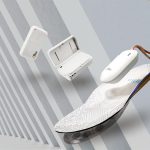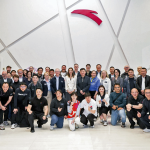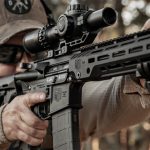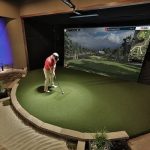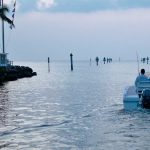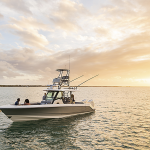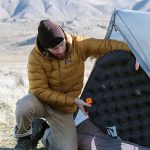Amer Groups consolidated net sales in second quarter declined 9.6% to EUR 225.7 million versus EUR 249.6 million in the year-ago period. Net sales declined due to the withdrawal from the tobacco business in March. Net income fell 48.9% to EUR 4.6 million, or EUR 0.19 per share, from EUR 9.0 million, or EUR 0.39 per share, in Q2 last year.
The sports equipment businesss sales grew by 2%. Sell-through of golf products didnt meet expectations. In addition, the Golf Divisions net sales were negatively affected by the earlier timing of deliveries, which this year were weighted towards the first quarter of the year. Sales of fitness equipment grew significantly. Foreign exchange rate movements reduced net sales by EUR 7 million.
EBIT was EUR 5.8 million (2003: EUR 14.6 million). EBIT was affected due to exiting the tobacco business as well as due to timing issues relating to reporting quarterly results. Profit before taxes and minority interest was EUR 6.5 million (2003: EUR 12.7 million).
Amer Groups net sales in the first half of 2004 declined by 2% to EUR 519.1 million versus EUR 530.8 million in the year-ago period. Exiting from the tobacco business in March had a 6% negative impact on net sales. The sports equipment businesss sales grew by 4%. In local currencies, sales of sports equipment grew by 11%. With the exception of the Golf Division, sales of all business areas grew in local currency terms.
Activity in the current year has started more positively in the sports equipment market than was the case last year and demand for sports equipment has strengthened.
Net sales by geographical market were as follows: Americas (including Latin America) 62%, EMEA (Europe, Middle East, Africa) 28% and Asia Pacific 10%. Sales grew by 2% in the Americas and by 15% in Asia Pacific but declined by 15% in EMEA due to the withdrawal from the tobacco business. In local currencies, net sales in the Americas grew by 13% and in Asia Pacific by 18% but declined in EMEA by 15%.
The Groups EBIT totaled EUR 52.5 million (2003: EUR 35.2 million). EBIT includes the consideration received from Philip Morris for the premature termination of the manufacturing and marketing license for Philip Morris products. Exiting from the tobacco business improved EBIT by EUR 14.2 million in the first half of 2004 compared to January June 2003. The sports equipment businesss EBIT grew by 10%.
Profit before taxes and minority interest was EUR 51.6 million (2003: EUR 31.1 million) and earnings per share were EUR 1.49 (2003: EUR 0.95).
Foreign exchange rate movements reduced net sales by EUR 30 million, due to the strengthening of the Euro especially against the US dollar. The corresponding impact on EBIT wasnt significant.
Return on capital employed (ROCE) was 24.3% (12 months rolling average) (January June 2003: 17.7%).
The Racquet Sports Division continued its good performance. In local currencies, the Racquet Sports Divisions net sales grew by 7%. Sales grew in the Americas by 7%, in EMEA by 2% and in Asia Pacific by 18%.
Sales of Wilson tennis rackets increased 7%. Sales of higher priced performance tennis rackets, Series H and Triad, grew especially in Japan and in Europe. In the Americas, sales of lower price point rackets at mass merchants and sporting goods retailers grew in particular. Sales of tennis balls increased 8%. Sales of footwear declined by 8%.
Wilson introduced the new nCode tennis rackets in May. nCode rackets use nanotechnology which increases the power and stability of the racket. Shipments to the US market started in July and will be worldwide during the third quarter of the year.
Wilson is the global leader in tennis rackets: in North America and Japan Wilson is the best-selling brand and in Europe the No. 2 brand. In tennis balls Wilson is No. 3 in the world.
Golf Division in H1 were flat to last year in local currency terms were similar to last year. Sales grew by 26% in Asia Pacific, were similar to last year in the Americas and declined in EMEA by 11%. Sales of Wilson golf clubs were similar to last year whereas sales of golf balls declined by 7%.
Profitability benefited from the restructuring of Wilsons US businesses and associated adjustment of its cost structure to correspond to prevailing business conditions, which began last year. However there was a dampening effect due to a decline in average selling prices.
The good progress made during the first quarter of the year didnt continue in April June, which is the high season for golf. Sell-through from the trade to consumers wasnt as good as expected and sales were also depressed by earlier deliveries, which were weighted towards the first quarter of the year. During the second quarter of the year, net sales in local currencies declined 15% compared to 2003.
In the US golf market, the number of rounds played increased by 2% in the January – June period. Overall sales of golf clubs to the trade grew by 4% in the US and sales of golf balls grew by 12%. (Source: National Golf Foundation, July 2004)
The work done with re-positioning the Wilson golf brand is now ready to be launched. During the remainder of the year, the Company will introduce new higher price point Wilson Staff golf clubs. This new range features modern technology and design combined with Wilsons long golf heritage. Deliveries will start in October and sales expectations are focused on 2005.
The primary goal for the Golf Division in 2004 is profitability. In terms of net sales, the goal is to match last years level in local currency terms.
The Team Sports Division continued to grow. Stated in local currencies, the Team Sports Divisions net sales grew by 12% and EBIT by 8%. Outside the United States sales grew by 15%.
The fastest growing product categories in Team Sports were American footballs (19%) and basketballs (24%). Sales of basketballs were driven by the official game ball agreement with the NCAA (National Collegiate Athletic Association) and a complete range of NCAA basketballs. Sales of baseball and softball bats grew by 14%, driven by the continued success of distributing DeMarini products globally. In the US, Half and Half bat technology continues to be a strong business driver. Sales of baseball gloves declined 11%.
Sales were also boosted by the acquisition of Athletic Training Equipment Company Inc. (ATEC) in November 2003. ATEC offers training equipment for baseball and softball. ATECs yearly net sales are around USD 11 million. The integration of ATEC into the Team Sports Division has been completed in line with plan.
Wilson is the number one team sports company in the USA and its position is especially strong in American football, basketball and baseball.
Winter Sports Division focused on producing next season's lines during the second quarter of the year. Due to its seasonality, Atomic's deliveries are heavily weighted towards the latter part of the year, the busiest months for deliveries being September and October. Due to this seasonality, Winter Sports' operating losses during the first half of 2004 were EUR 14.9 million. EBIT was impacted by some investment in strengthening the distribution network, especially in Japan, where Winter Sports distribution has been transferred to Amer Sports Japan. Distribution in Japan has previously been handled by ASICS Japan.
Winter Sports net sales in local currencies grew by 13% compared to January June in 2003. Sales grew by 26% in EMEA and by 16% in the Americas. Sales of alpine skis grew by 7%.
In February Atomic launched the new Metron ski which with its wide body and use of Beta 5 technology performs in all conditions. In addition, a new generation of ski bindings named Neox was launched during the spring. Following its acquisition in December 2003, a completely new range of Volant products will be launched for the 2004/2005 winter sports season.
The major part of Winter Sports pre-orders for the coming season have now been received and the level of orders is approximately 9% higher than last year. On the basis of deliveries at the beginning of the year as well as the level of pre-orders in hand, Winter Sports net sales for the year as a whole in local currencies are expected to grow by approximately 10%. Net sales during the remainder of the year will be affected by prospective snow conditions, which impact sell-through to consumers and thereby the level of reorders. Sales growth has been weighted towards lower margin products. In addition, the Company hasnt been able to pass on in full its Euro-denominated manufacturing costs in terms of its North American selling prices, which is depressing its sales margins slightly.
The Fitness Equipment Division continued to grow. Net sales in local currency terms increased 31% and EBIT increased 16% during the period under review. The fastest growing product categories were elliptical cross-trainers and stationary cycles. Sales growth was boosted by the acquisitions made in January 2004. Outside the Americas sales grew by 36%.
Club membership figures increased in the US in 2003 by 9%. Demand for fitness equipment started to pick up towards the end of 2003 in North America and this improvement continued during the first half of 2004. In Europe, pricing continued to be competitive.
In January 2004 the Fitness Equipment Division strengthened its position as a full-line supplier of fitness equipment by acquiring the operations of Fitness Products International LLC (FPI), a manufacturer of strength training equipment, for USD 11.8 million. FPI generates annual sales of approximately USD 13 million. ClubCom, a provider of private television network systems, audio/video entertainment and video hardware and systems to clubs and fitness facilities, was also acquired in January, for a total of USD 22.0 million. ClubComs annual net sales total approximately USD 15 million. The integration of both FPI and ClubCom into Precor has proceeded according to plan.
The increase in the Groups goodwill related to these acquisitions was EUR 23.5 million as at 30 June 2004. There were no other major new assets added to the Group balance sheet due to these acquisitions. The acquired companies and operations did not have a significant impact on EBIT in the first half of the year.
Stated in local currencies, Suuntos net sales grew by 2%. Geographically, sales grew by 11% in the Americas and declined by 3% in EMEA. Sales of Suuntos non-core product groups declined.
Sales of Suuntos wristop computers were similar to last year. Sales of Suuntos diving instruments grew by 15%. Wristop computers and diving instruments accounted for 60% of Suuntos net sales (58%).
In March, Suunto launched the Suunto X9 featuring GPS for hikers. Shipments of the Suunto G3 for golfers started in April. In June Suunto launched the new Suunto t6, which is based on calculating variations in heart rate thus enabling sports participants to analyze if their exercise is improving their performance.


